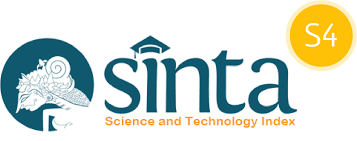Penerapan Kecerdasan Buatan Untuk Menentukan Gejala Utama Polycystic Ovary Syndrom (PCOS) Berdasarkan Data Klinis Pasien
DOI:
https://doi.org/10.29408/jit.v8i2.31123Keywords:
Artificial Intelligence, PCOS, Machine Learning, SVM, ClassificationAbstract
Polycystic Ovary Syndrome (PCOS) is a common hormonal disorder among women of reproductive age, often leading to menstrual irregularities, infertility, and metabolic issues. Diagnosing PCOS remains challenging due to the wide range of symptoms and varying patient responses to treatment. Therefore, this study aims to apply artificial intelligence (AI) to identify key symptoms contributing to PCOS based on patients' clinical data.This study employs a machine learning approach, with the Support Vector Machine (SVM) algorithm as the primary method for classifying patients with and without PCOS. The data used was sourced from patient medical records, which included clinical data parameters obtained from the Kaggle website, with a total of 541 patient data samples. The research stages include data collection and preprocessing, selection of main features using feature selection technique, model training with SVM algorithm. The AI model developed produces 10 main features that affect the diagnosis with an accuracy value of 90.74% which shows that the model has the ability to classify PCOS and non-PCOS sufferers. In addition, the matrix shows a balance between the matrix values for precision 87.5%, recall 82.35% and F1 score 84.85%. The results of this study are expected to contribute to the medical field, especially in supporting faster and more accurate early diagnosis and personalization of PCOS treatment.
References
[1] J. P. Husada And A. Akbar, “Peran Olahraga Dalam Mengelola Gejala Pcos,” Jurnal Pandu Husada, Vol. 6, No. 2, 2025, [Online]. Available: Https://Jurnal.Umsu.Ac.Id/Index.Php/Jph
[2] Dakhaz Mustafa Abdullah And Adnan Mohsin Abdulazeez, “Machine Learning Applications Based On SVM Classification : A Review,” Qubahan Academic Journal, Vol. 3, No. 4, Pp. 206–218, Nov. 2023, Doi: 10.48161/Issn.2709-8206.
[3] D. Triyanto, “Support Vector Machine Untuk Klasifikasi Penyakit Diabetes Mellitus,” Media Teknologi Dan Informatika, Vol. 1, Pp. 2024–147, 2024, [Online]. Available: Http://Jurnal.Bsi.Ac.Id/Index.Php/Mti
[4] E. Y. Kurniawati, S. Hadisaputro, And A. Suwandono, “Profil Klinis Wanita Dengan Sindrom Ovarium Polikistik,” Media Ilmu Kesehatan, Vol. 11, No. 2, Mar. 2023, Doi: 10.30989/Mik.V11i2.762.
[5] W. Q. Salsabila, K. Adyani, And F. Realita, “Literatur Review: Faktor Resiko Sindrom Ovarium Polikistik Pada Remaja,” Journal Of Health (Joh), Vol. 11, No. 02, Pp. 164–174, Jun. 2024, Doi: 10.30590/Joh.V11n2.832.
[6] B. A. Candra Permana And I. K. Dewi Patwari, “Komparasi Metode Klasifikasi Data Mining Decision Tree Dan Naïve Bayes Untuk Prediksi Penyakit Diabetes,” Infotek : Jurnal Informatika Dan Teknologi, Vol. 4, No. 1, Pp. 63–69, Jan. 2021, Doi: 10.29408/Jit.V4i1.2994.
[7] R. G. Wardhana, G. Wang, and F. Sibuea, “Penerapan machine learning dalam prediksi tingkat kasus penyakit di Indonesia,” Journal of Information System Management (JOISM), vol. 5, no. 1, 2023.
[8] M. A. Thaariq, M. Dimas, M. Baskara, R. A. Chaniago, D. Christin, and I. Ernawati, “Systematic literature review: Analisis penerapan kecerdasan buatan dalam bidang kesehatan,” in Seminar Nasional Mahasiswa Ilmu Komputer dan Aplikasinya (SENAMIKA), Jakarta, Indonesia, Apr. 25, 2024. e-ISSN: 2962-6129..
[9] H. Z. Elnaz Putri and H. Fahmi, “Implementasi Metode Support Vector Machine pada Klasifikasi Diagnosis Penyakit Hipertensi,” Jurnal Riset Mahasiswa Matematika, vol. 3, no. 5, pp. 241–250, Jun. 2024, doi: 10.18860/jrmm.v3i5.27312.
[10] A. Putranto, N. L. Azizah, I. Ratna, I. Astutik, F. Sains, and D. Teknologi, “Sistem Prediksi Penyakit Jantung Berbasis Web Menggunakan Metode SVM dan Framework Streamlit,” Apr. 2023. [Online]. Available: https://archive.ics.uci.edu/ml/datasets/heart+disease
[11] B. A. C. Permana and M. Djamaluddin, “Penerapan Python Dalam Data Mining Untuk Prediksi Kangker Paru,” Infotek : Jurnal Informatika dan Teknologi, vol. 6, no. 2, pp. 470–477, Jul. 2023, doi: 10.29408/jit.v6i2.17816.
[12] R. Hidayat, Y. S. Sy, T. Sujana, M. Husnah, H. T. Saputra, and F. Okmayura, “Implementasi Machine Learning Untuk Prediksi Penyakit Jantung Menggunakan Algoritma Support Vector Machine,” BIOS : Jurnal Teknologi Informasi dan Rekayasa Komputer, vol. 5, no. 2, pp. 161–168, Sep. 2024, doi: 10.37148/bios.v5i2.152.
[13] N. T. Pitaloka, “PCOS disease classification using feature selection RFECV and EDA with KNN algorithm method,” Jurnal Teknik Informatika (JUTIF), vol. 4, no. 4, pp. 693–701, Aug. 2023, doi: 10.52436/1.jutif.2023.4.4.693.
[14] H. R. Cahya et al., “Sinergi AI dan machine learning untuk prediksi multikeluhan pada diagnosis penyakit kepala: Systematic literature review,” JATI (Jurnal Mahasiswa Teknik Informatika), vol. 9, no. 1, Feb. 2025.
[15] T. Permatasari Djaka and A. S. Winarsih, “Analisis Kinerja Ensemble Learning dan Algoritma Tunggal dalam Klasifikasi Sindrom Ovarium Polikistik Menggunakan Random Forest, Logistic Regression, dan XGBoost,” vol. 16, no. 01, 2024, doi: 10.35970/infotekmesin.v16i1.2504.
[16] A. Ghafari, M. Maftoohi, M. E. Samarin, S. Barani, M. Banimohammad, and R. Samie, “The last update on polycystic ovary syndrome(PCOS), diagnosis criteria, and novel treatment,” Mar. 01, 2025, Elsevier B.V. doi: 10.1016/j.endmts.2025.100228.
[17] A. Agrawal, R. Ambad, R. Lahoti, P. Muley, and P. Pande, “Role of artificial intelligence in PCOS detection,” Apr. 01, 2022, Wolters Kluwer Medknow Publications. doi: 10.4103/jdmimsu.jdmimsu_278_22.
[18] N. Komang Widiastuti, K. Dwi, A. Mas Putrayana, And I. G. Widhiantara, “Resistensi Insulin Dan Kaitannya Dengan Hiperandrogenisme Pada Penderita Pcos,” 2021.
[19] J. T. Atmojo Et Al., “Artificial Intelligence Dalam Praktik Kesehatan.” [Online]. Available: Http://Journal.Stikeskendal.Ac.Id/Index.Php/Pskm
Downloads
Published
How to Cite
Issue
Section
License
Copyright (c) 2025 Infotek: Jurnal Informatika dan Teknologi

This work is licensed under a Creative Commons Attribution 4.0 International License.
Semua tulisan pada jurnal ini menjadi tanggung jawab penuh penulis. Jurnal Infotek memberikan akses terbuka terhadap siapapun agar informasi dan temuan pada artikel tersebut bermanfaat bagi semua orang. Jurnal Infotek ini dapat diakses dan diunduh secara gratis, tanpa dipungut biaya sesuai dengan lisense creative commons yang digunakan.
Jurnal Infotek is licensed under a Creative Commons Attribution 4.0 International License.
Statistik Pengunjung




